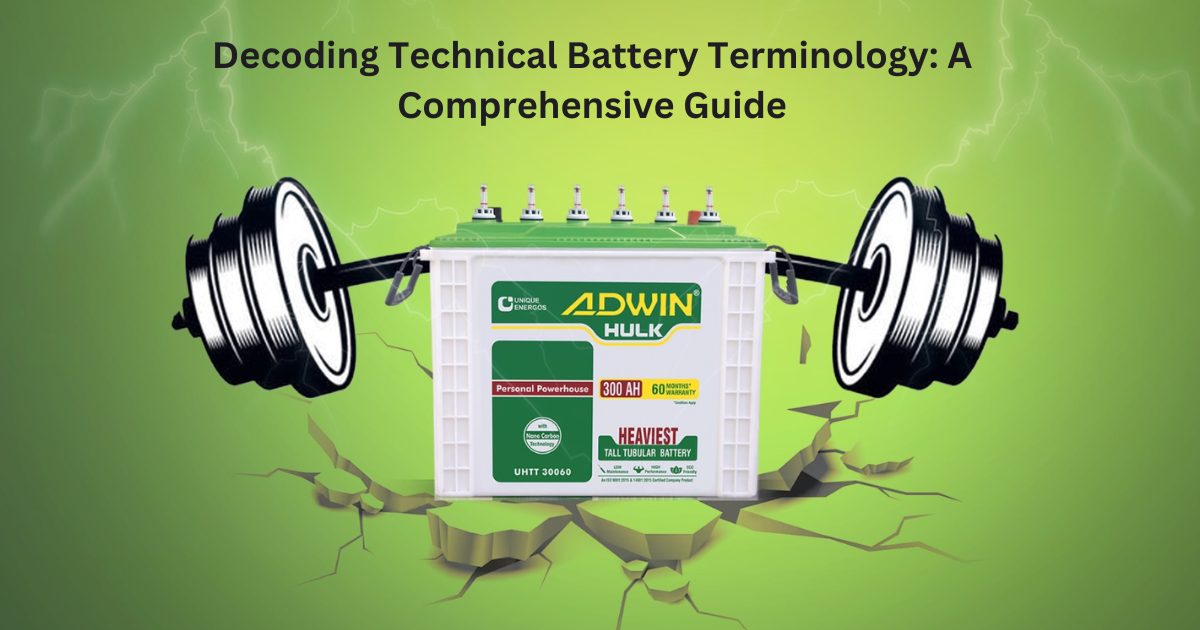Batteries power our daily lives, from the devices we rely on to the vehicles we drive. However, navigating the labyrinth of technical terms associated with batteries can be daunting. Fear not! This comprehensive guide is here to demystify the jargon, providing clarity on the technical battery terms crucial for understanding, selecting, and maintaining these power sources.
1. Ampere-hour (Ah):
Ampere-hour measures a battery’s capacity to provide a current of one ampere for one hour. Higher Ah ratings indicate batteries capable of supplying power for longer durations, crucial when considering energy needs.
2. Cold Cranking Amps (CCA):
Specifically pertinent to automotive batteries, CCA quantifies a battery’s ability to start a vehicle in cold temperatures. It denotes the current a battery can deliver at 0°F (-18°C) for 30 seconds without dropping below a specific voltage, ensuring reliable starts in harsh conditions.
3. Reserve Capacity (RC):
In automotive batteries, RC indicates the number of minutes a fully charged battery can deliver a consistent current before falling below a set voltage threshold. This metric is vital for assessing a battery’s performance under varying conditions.
4. Depth of Discharge (DoD):
DoD represents the percentage of a battery’s capacity that has been discharged. Monitoring and managing DoD are critical for maximizing a battery’s lifespan and performance.
5. Internal Resistance:
The resistance within a battery affects its efficiency. Lower internal resistance means better efficiency, quicker charging/discharging, and less energy loss.
6. Memory Effect:
Mostly observed in Nickel-cadmium (NiCd) batteries, the memory effect refers to a decrease in a battery’s capacity when repeatedly charged and discharged without using its full capacity. Modern batteries like Lithium-ion (Li-ion) are less susceptible to this phenomenon.
7. Electrolyte:
A solution of sulfuric acid and water in a lead-acid battery facilitates the flow of electrical current between the battery’s plates, aiding in the chemical reactions during charging and discharging.
8. Sulfation:
Sulfation occurs when lead sulfate crystals accumulate on a battery’s plates, reducing its capacity and performance. Proper charging and maintenance practices help minimize sulfation.
9. Vent Caps:
Caps on lead-acid batteries that allow the release of gases produced during charging. They also enable the addition of distilled water to maintain electrolyte levels.
Conclusion:
Knowing these technical battery terms equips individuals with the knowledge to make informed decisions about battery selection, usage, and maintenance. Whether it’s ensuring a car starts reliably in frigid temperatures or optimizing the lifespan of rechargeable batteries, familiarity with these terms empowers users to harness the full potential of these energy storage solutions.
Next time you shop for a battery or contemplate its performance, let these technical terms guide you through the intricacies of the battery world, empowering you to make informed choices for your energy needs!
Upgrade Your Power Solutions with Adwin – Your Trusted Battery Manufacturer! Find Reliable, High-Performance Batteries for Every Need. Explore Now!






